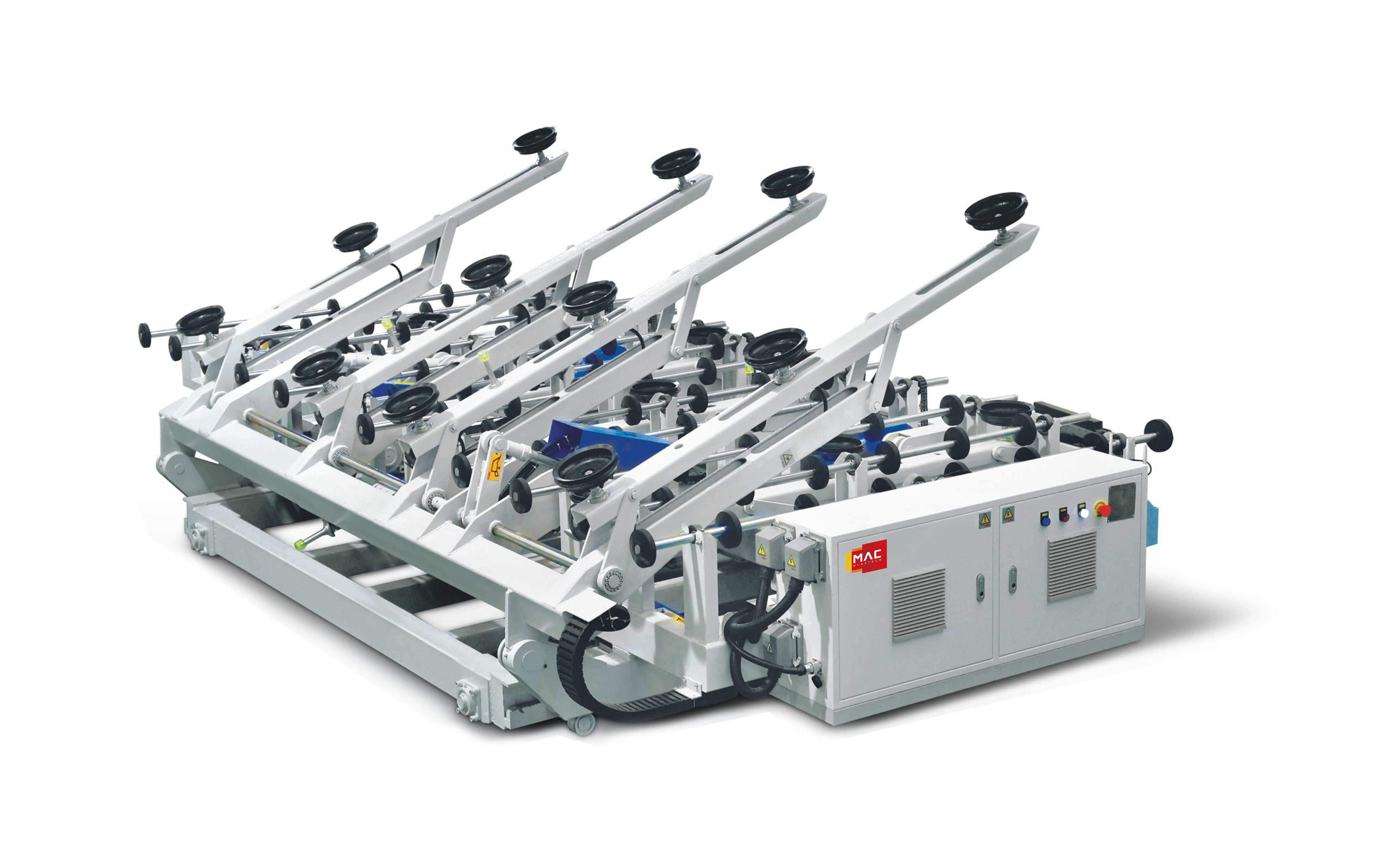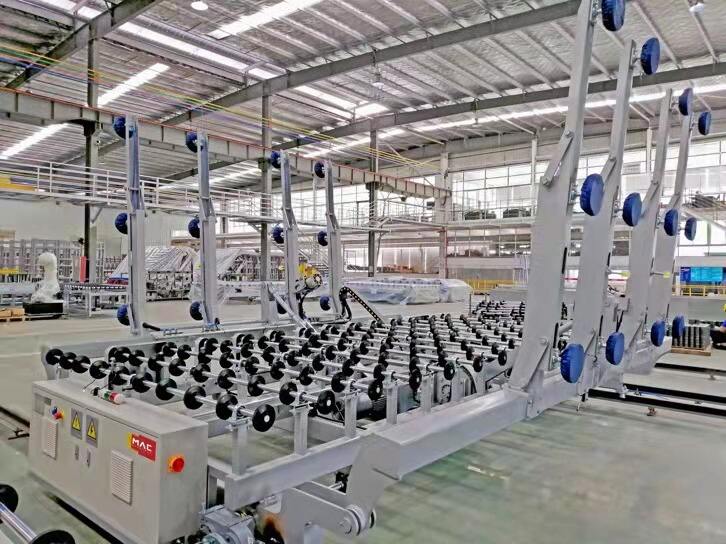The Revolution of Automated Glass Processing in Modern Manufacturing
The manufacturing landscape is undergoing a dramatic transformation as smart glass cutting lines increasingly become the backbone of modern glass processing facilities. These sophisticated systems represent a quantum leap from traditional manual cutting methods, combining precision engineering with artificial intelligence to deliver unprecedented efficiency and quality in glass production. As factories worldwide embrace Industry 4.0 principles, smart glass cutting lines are emerging as a pivotal technology that's reshaping the future of glass manufacturing.
The integration of smart glass cutting lines into factory operations marks a significant milestone in the evolution of glass processing. These advanced systems not only streamline production processes but also introduce levels of accuracy and consistency that were previously unattainable with conventional methods. The technology's rapid adoption across the industry signals a new era in manufacturing excellence, where automation and intelligence converge to create superior glass products.
Core Components of Modern Glass Processing Systems
Intelligent Cutting Technology
At the heart of smart glass cutting lines lies sophisticated cutting technology that combines precision mechanics with intelligent control systems. These systems utilize advanced algorithms to optimize cutting patterns, minimizing waste while maximizing output quality. The cutting mechanisms employ state-of-the-art tools that ensure clean, precise cuts across various glass thicknesses and compositions.
Modern smart glass cutting lines incorporate sensors and real-time monitoring systems that continuously adjust cutting parameters based on glass characteristics and environmental conditions. This adaptive capability ensures consistent quality regardless of material variations or external factors, representing a significant advancement over traditional cutting methods.
Automated Material Handling Systems
The efficiency of smart glass cutting lines is greatly enhanced by their integrated material handling capabilities. Robotic arms and conveyor systems work in perfect synchronization to move glass sheets through various processing stages with minimal human intervention. These automated systems significantly reduce the risk of damage while maintaining a steady production flow.
Advanced loading and unloading stations ensure smooth material transitions, while sophisticated positioning systems guarantee precise alignment for cutting operations. The integration of these components creates a seamless workflow that maximizes productivity while minimizing the potential for human error.
Benefits Driving Industry-Wide Adoption
Enhanced Productivity and Efficiency
Smart glass cutting lines have revolutionized production capabilities in glass processing facilities. These systems operate continuously with minimal downtime, achieving production rates that far exceed traditional methods. The automation of complex cutting patterns and material handling tasks allows factories to maintain high output levels while ensuring consistent quality standards.
The integration of smart scheduling and optimization algorithms enables these systems to automatically adjust production sequences, minimizing setup times and maximizing resource utilization. This enhanced efficiency translates directly into improved bottom-line results for manufacturers.
Quality Improvements and Waste Reduction
One of the most compelling advantages of smart glass cutting lines is their ability to maintain exceptional quality standards while minimizing material waste. Advanced optimization algorithms calculate the most efficient cutting patterns, resulting in significant reductions in scrap material. The precision of automated cutting systems ensures that each piece meets exact specifications, reducing rejection rates and rework requirements.
Real-time quality monitoring systems integrated into smart cutting lines can detect and address potential issues before they impact final product quality. This proactive approach to quality control helps manufacturers maintain high standards while reducing operational costs.

Implementation Considerations and Best Practices
Integration with Existing Systems
Successful implementation of smart glass cutting lines requires careful consideration of existing factory infrastructure and workflows. The integration process should be planned to minimize disruption to ongoing operations while ensuring seamless communication between new and existing systems. This often involves updating control systems and establishing robust data connectivity throughout the facility.
Manufacturers must also consider the training requirements for operators and maintenance personnel. While smart glass cutting lines reduce the need for manual intervention, they require skilled technicians who understand both the mechanical and digital aspects of the system.
Maintenance and Support Requirements
To maximize the benefits of smart glass cutting lines, manufacturers must implement comprehensive maintenance programs. Predictive maintenance capabilities, enabled by built-in monitoring systems, help prevent unexpected downtime and extend equipment life. Regular calibration and performance optimization ensure that the system continues to operate at peak efficiency.
Support infrastructure, including spare parts inventory and technical expertise, must be readily available to address any issues that arise. This requires establishing strong relationships with equipment suppliers and maintaining in-house technical capabilities.
Future Trends and Developments
Artificial Intelligence and Machine Learning Applications
The future of smart glass cutting lines lies in the increasing integration of artificial intelligence and machine learning capabilities. These technologies will enable systems to continuously improve their performance through learned experience, optimizing cutting patterns and processing parameters in real-time. Advanced analytics will provide deeper insights into production efficiency and quality trends.
Emerging AI applications will enhance predictive maintenance capabilities, allowing systems to anticipate potential issues before they impact production. This proactive approach to system management will further reduce downtime and maintenance costs.
Industry 4.0 Integration
As Industry 4.0 continues to evolve, smart glass cutting lines will become increasingly connected to broader manufacturing ecosystems. This integration will enable real-time production planning, automated supply chain management, and enhanced quality control across entire manufacturing operations. The ability to share data and coordinate activities across different production systems will drive further efficiency improvements.
The development of standardized communication protocols and data formats will facilitate seamless integration between different manufacturers' equipment, creating more flexible and adaptable production environments.
Frequently Asked Questions
What is the typical return on investment for smart glass cutting lines?
The return on investment for smart glass cutting lines typically ranges from 12 to 24 months, depending on production volume and efficiency gains. Factors affecting ROI include reduced waste, increased productivity, lower labor costs, and improved quality outcomes. Most manufacturers report significant cost savings through reduced material waste and labor requirements.
How do smart glass cutting lines impact workplace safety?
Smart glass cutting lines significantly improve workplace safety by minimizing human contact with dangerous materials and equipment. Automated handling systems reduce the risk of injuries associated with manual glass handling, while advanced safety features and emergency stops ensure operator protection. The reduction in physical labor also leads to fewer repetitive strain injuries.
What level of operator training is required?
While smart glass cutting lines automate many processes, operators typically require 2-4 weeks of specialized training to effectively manage these systems. Training covers system operation, basic maintenance procedures, and troubleshooting protocols. Ongoing support and refresher training ensure operators maintain proficiency with system updates and new features.
 EN
EN
 AR
AR
 BG
BG
 HR
HR
 CS
CS
 DA
DA
 NL
NL
 FI
FI
 FR
FR
 DE
DE
 EL
EL
 HI
HI
 IT
IT
 JA
JA
 KO
KO
 PL
PL
 PT
PT
 RO
RO
 RU
RU
 ES
ES
 SV
SV
 TL
TL
 IW
IW
 LV
LV
 LT
LT
 SK
SK
 SL
SL
 UK
UK
 VI
VI
 ET
ET
 HU
HU
 MT
MT
 TH
TH
 TR
TR
 FA
FA
 MS
MS
 SW
SW
 GA
GA
 AZ
AZ
